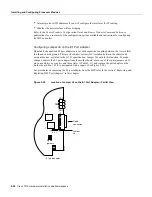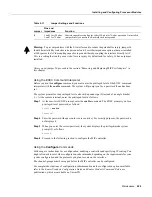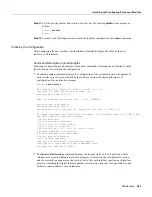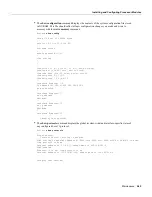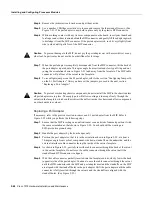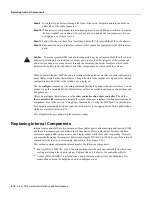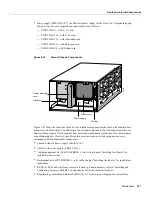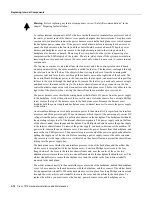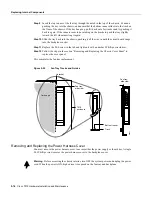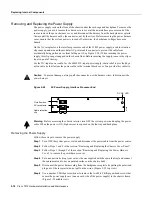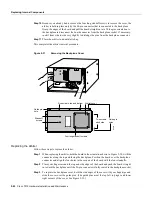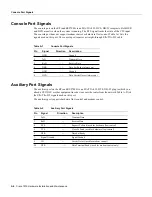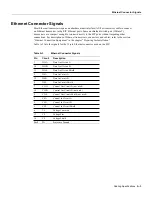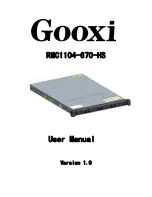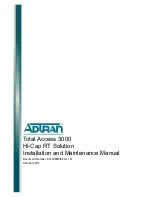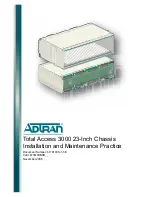
5-72 Cisco 7010 Hardware Installation and Maintenance
Replacing Internal Components
Warning
Before replacing any internal components, review “Safety Recommendations” in the
chapter “Preparing for Installation.”
To replace internal components, all of which are inside the service (noninterface processor) end of
the router, you must remove the chassis cover panel and expose the chassis interior. To replace some
components, you must also remove the power harness cover and the backplane cover, which exposes
the backplane power connection. If the power is not shutdown before removing the chassis cover
panel, the high current on the fan tray and fan control board becomes a hazard. When the power
harness and backplane covers are removed, the high current present in the wiring and on the
backplane also becomes a hazard. Removing the cover panel when the system is operating also
compromises the EMI integrity of the system. Therefore, always turn off the system power before
removing the cover panel, and remove the cover panel only when it is necessary to replace internal
components.
The fan tray comprises six individual fans (the fan array) and a fan control printed circuit board
mounted on a metal tray; the entire assembly is called the fan tray. The fans draw cooling air through
the inlet vents on the left side of the chassis (when viewing the chassis from the nonintegrated
processor end) and force the air out through the exhaust vents on the right side of the chassis. The
fan control board distributes power to the fans, controls the fan speed, and monitors and reports fan
failures to the system through the backplane. To remove the fan tray, you need only remove a single
pan-head screw that anchors the tray to the interior chassis frame; an edge connector on the fan
control board also snaps into a socket connector on the backplane cover. The fan tray slides into the
right side of the chassis (when viewing the chassis from the noninterface processor end).
The power harness cover shields the wiring harness that delivers DC power from the power supply
to the backplane. A tab at the bottom of the cover fits into a slot in the chassis floor; a single Phillips
screw secures the top of the harness cover to the backplane cover. Because the harness cover
straddles both the power supply and backplane cover, you must remove it to access the power supply
or the arbiter.
An external modular power cord delivers source power to the external AC receptacle on the interface
processor end of the power supply. The power harness, which is part of the power supply, carries DC
voltages from the power supply to a polarized connector on the backplane. The backplane distributes
the operating voltages to all of the internal chassis components. The power supply rests on the floor
of the chassis, under the card cage and backplane. Two Phillips-head screws secure the power supply
to the interior chassis frame. To remove the power supply, you need to disconnect the modular AC
power cord, remove the power harness cover, disconnect the power harness from the backplane, and
remove the two Phillips screws. The noninterface processor end of the power supply has handles for
pulling the supply out of the chassis. Before inserting a power supply, remove the cable retention
clip (or secure it with tape); otherwise, it will catch on the chassis floor and prevent the chassis from
sliding into the power supply bay.
The backplane cover shields the noninterface processor side of the backplane and the arbiter (the
arbiter cover is integrated with the backplane cover). Fourteen Phillips screws secure the four
flanged sides of the cover to the interior chassis frame and, near the center of the cover, two
additional screws secure the cover to two standoffs mounted to the backplane (behind the cover). The
arbiter standoff screws secure the backplane cover and the arbiter to the four arbiter standoffs
mounted to the backplane.
The arbiter mounts directly to the noninterface processor side of the backplane, behind the backplane
cover. A bus connector on the arbiter mates with the backplane, and the corners of the arbiter board
butt up against four standoffs. When the backplane cover is in place, four long Phillips screws extend
through the cover, arbiter, and standoffs to secure the cover and the arbiter to the backplane. To
replace the arbiter, you must remove the fan tray, power harness cover, and backplane cover.
Summary of Contents for TelePresence Server 7010
Page 10: ...x Cisco 7010 Hardware Installation and Maintenence ...
Page 14: ...iv Cisco 7010 Hardware Installation and Maintenance Document Conventions ...
Page 148: ...3 36 Cisco 7010 Hardware Installation and Maintenance Using the Flash Memory Card ...
Page 158: ...4 10 Cisco 7010 Hardware Installation and Maintenance Troubleshooting the Processor Subsystem ...
Page 242: ...5 84 Cisco 7010 Hardware Installation and Maintenance Replacing Internal Components ...
Page 258: ...A 16 Cisco 7010 Hardware Installation and Maintenance MIP Interface Cable Pinouts ...
Page 270: ...B 12 Cisco 7010 Hardware Installation and Maintenance Interface Processor LEDs ...
Page 274: ...C 4 Cisco 7000 Hardware Installation and Maintenance ...
Page 287: ...Index 13 ...

